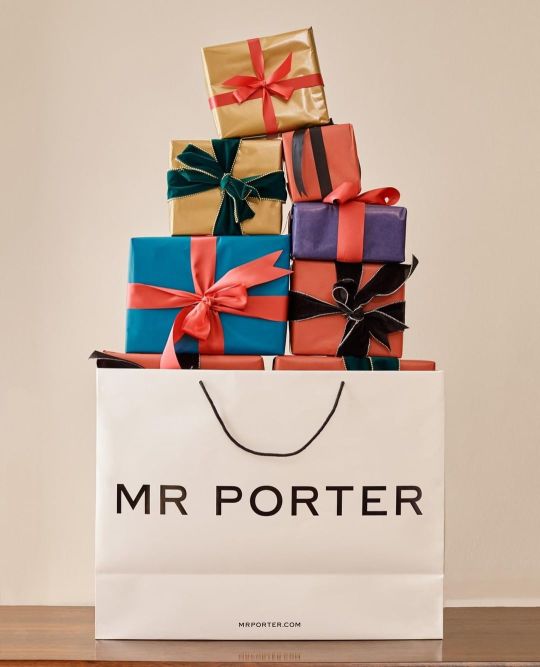
The best sales event of every season is always at Mr. Porter. Where else, after all, can you find discounted Edward Green shoes and Drake’s accessories sitting alongside niche Japanese labels and American workwear? Tonight, they started their end-of-season promotion, where you can find select fall/ winter stock on sale for about 50% off.
The selection here is huge, and things tend to move quickly, so there are three good rules of thumbs to follow. First, if you’re on the fence about something, it’s almost always worth buying now and trying the item in-person. Mr. Porter has a hassle-free return policy, with free delivery both ways, so you risk little. Relatedly, since other shoppers are often operating with the same logic, you may want to check back often. Throughout the next couple of weeks, new sizes will pop in and out as customers return items. Thirdly, since the inventory here is so large, I find it’s often best to hit the sale section and sort by categories and sizes. This way, you may come across a serendipitous deal that you would have otherwise missed if you were just looking for brands.
That said, there are some notable brands here. Inis Meain’s sweaters are expensive, even with the discount, but absolutely exquisite and a joy to wear. Engineered Garments, Blue Blue Japan, and Kapital are personal favorites for workwear; SNS Herning is great textured knitwear you can layer under heavy coats (be sure to size up). I’m also pleasantly surprised to see how many footwear brands are included in the promotion – RM Williams, Common Projects, John Lobb, George Cleverley, and Visvim among them. Here are ten things I think are especially worth highlighting.
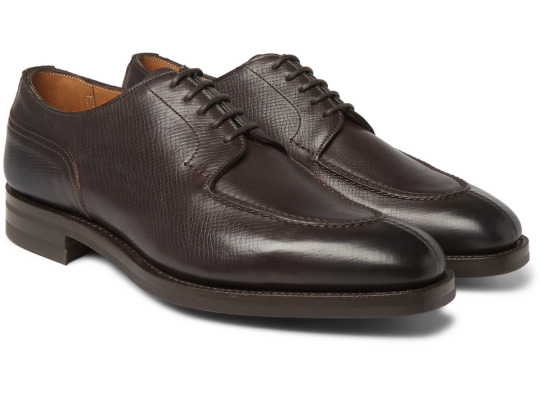
Among derbies, none make my heart pitter patter as much as the Norwegian split toe. Wingtips are too common; cap toes are too plain. Split toes plant your feet into the ground and say you like something different. They’re also tremendously versatile, spanning a larger gamut than most in terms of wardrobe pairings. In a pinch, they can work with jeans or suits, but they’re most at home with sport coats and odd trousers. Which is usually what I’m wearing if I’m in tailored clothing.
For me, Edward Green’s Dover is the Platonic ideal when it comes to split toes – it’s certainly the company’s most iconic style. The Dover is made with what’s colloquially known as a pie-crust apron, which is constructed with a split-and-lift stitch. Here, a sewer will tunnel halfway through into the leather, and then come out the other side to form an apron. Unlike machine-sewn aprons, this gives the leather a bit more texture. I find handsewn aprons like these really bring the style into its own, and Edward Green’s version among the best of them. Get a pair in dark brown pebble grain for fall/ winter outfits, or suede if you want something that works year-round.
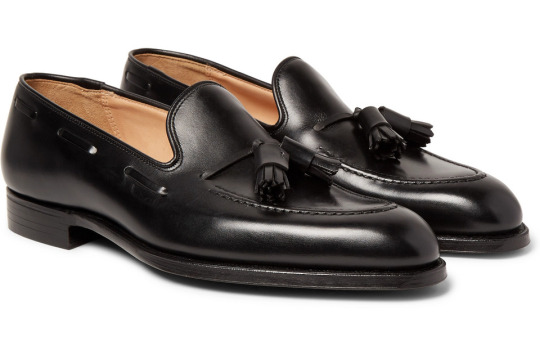
George Cleverley Tassel Loafers
Tassel loafers carry a bit of cultural baggage, but so long as you wear them with a smile instead of a sneer, I think they can look charming. I have two a pairs – one in brown suede, and the other in brown calfskin – that I wear with blue sport coats and brown tweeds. In the last couple of years, I’ve been wanting to add another pair in black.
Black tassel loafers feel a bit more modern and sophisticated than the same ones in brown, towing the line between formality and casual. They can also feel a little unexpected, making them a style statement. George Wang of BRIO keeps a pair at his home in California. “They work really well with a navy suit, in an American Ivy and Italian-Ivy kind of way,” he says. “If someone has a preference for washed out jeans, like a pair of vintage Levi’s, then black also works much better.” These from Cleverly are a little sleeker than Alden’s, but they’re still reasonably conservative.
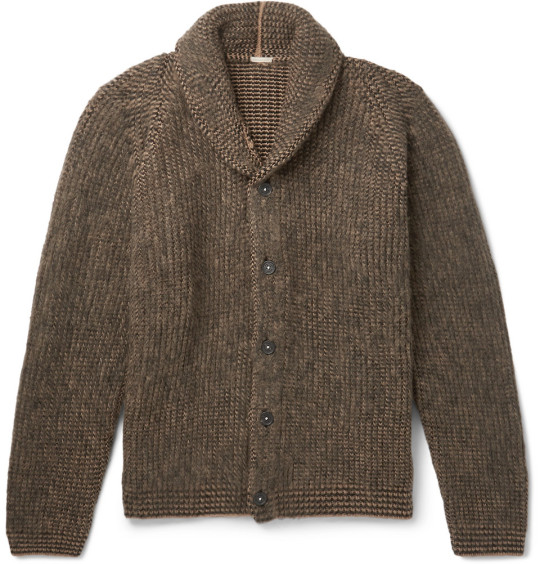
Massimo Alba Brushed Camel Hair Cardigan
Massimo Alba is a bold Italian designer who’s known for his adventurous use of fabrics – not in terms of color, but rather fiber and finishing. He updates things such as classic button-ups and deconstructed sport coats with materials such as washed cashmere, cotton-modal blends, and yak hair. One of his most signature pieces is a five-pocket pair of pants, which he constructs from a variety of upholstery velvets. He often wears a pair with thick turtlenecks and contemporary sport coats (trim, short, and deconstructed). I admire his style, even if I’m not sure I could pull it off.
This shawl collar cardigan, however, would work with almost any wardrobe. It’s made from a brushed camel hair yarn, which gives the knits a cozy, almost mohair like appearance. This is the sort of thing you can wear in lieu of a sport coat when entertaining guests at home, then use the same sweater the next morning when getting coffee. I also find chunky shawl collar knits like this one are great for men who mainly work from home. They’re cozy, comfortable, and feel like you’re wearing a plush blanket, except that they make you look infinitely more presentable.
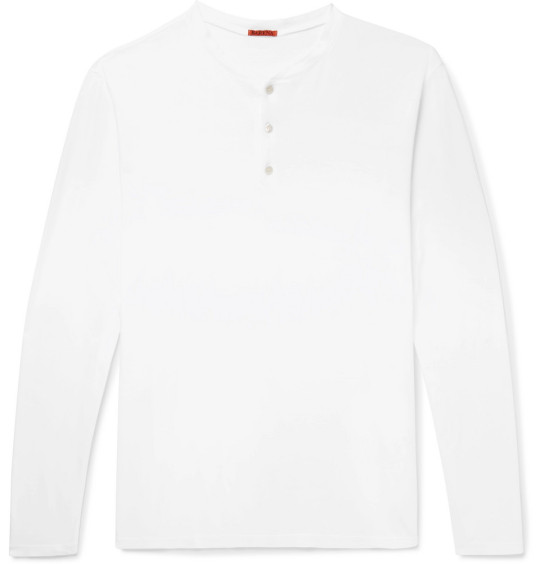
I have a stack of Barena’s henleys in my dresser. They’re useful when you want something a bit more interesting than a t-shirt, but also more casual than a button-up. I wear mine with everything from a Margiela five-zip to Chimala chore coats. The sleeves are extra long, which I think lends a nice silhouette, but you can fold them back if you find they get in the way (or even hem them, if you wish).
The best thing about this is the cut. The half-placket, pullover style was originally made popular in the ‘70s, before making a comeback in the ‘90s through Ralph Lauren and Eddie Bauer. These days, you’re most likely to see one layered underneath a flannel shirt or Army jacket for a workwear look. Henleys are typically fitted and made from a rugged cotton, but Barena’s version is slightly loose and made from a finer material. It feels more contemporary, in that sense, and is less heavy handed with the masculine overtones. I also find it clings less to the body, making it more forgiving.
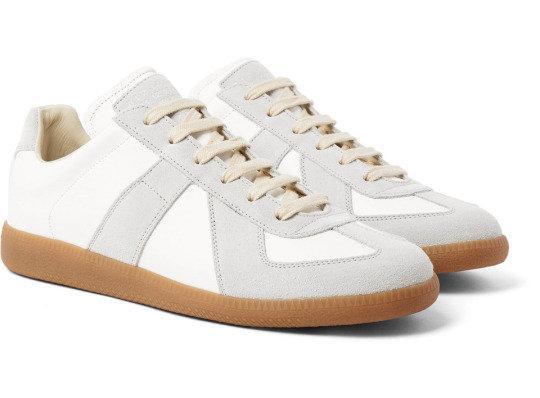
Over the years, no sneaker has stayed in my rotation as long as the German Army Trainer. The GAT, as it is colloquially known, was one of the first – if not the first – sneaker to be broadly accepted in the fashion world. It’s a shoe with history, one that was supposedly first worn by German Army recruits for indoor exercises in the 1970s. Sometime in the ‘90s, Belgian designer Martin Margiela stumbled upon a pair and replicated them as part of his Replica line. His version, which was made from better materials than original, was distinguished with an added grey-stripe accent. The style has been endlessly copied since, but I think Margiela’s version is still the best.
The shoes are great because they go with almost anything. They sit naturally with the sort of contemporary styles you’d find at Margiela, but also work well with Americana and workwear. And like most good footwear, they look better beat-up, which means you don’t have to fuss over them. They’re a bit sportier than Common Projects, but so long as you keep them away from tailoring, I think they look great.

If you’ve been following menswear accounts on Instagram, you may have seen Orslow’s jeans pop up a few times over the last year. They’ve become popular because they’re so easy to wear with everything from sport coats to field jackets. Since they come up a little higher on the waist, they’re both flattering and forgiving, while also maintaining a slimmer leg line. If you’ve ever felt that some slim-straight jeans are too shapeless, but some fashion-forward cuts are hard to wear, these can be a good place to look.
Orslow has two models: their slim-straight 105 and the slim-tapered 107 (the second of which is what I wear). They come in a variety of washes, with the lighter colors being surprisingly good, and are made in Japan using traditional shuttle-loomed selvedge denim. The only thing that’s confusing about is their sizing. I have a 30 inch waist and take a size 2 in their 107 cut. I imagine that means that the size 3 is for a 32 waist, size 4 is for a 34 waist, and so forth.

I’m a huge fan of Drake’s. At a time when classic clothing is struggling to feel relevant again, Drake’s clothes still feel exciting season after season. Among their ties, you can always find those Macclesfield prints that will remain classic in any neckwear wardrobe, but also slightly off-beat, even whimsical designs that are fun to wear. Their scarves are an absolute delight, while sacrificing nothing in terms of quality, and every season has pocket squares that draw me in.
At the moment, Mr. Porter has three of their sport coats – a green corduroy, brown check, and the Abraham Moon tweed you see above. The sport coats are made by Belvest in Italy, which is something of a return-to-history, as Michael Drake used to travel the world selling Belvest before he started his own company. They’re a slightly more contemporary cut, with a softer build and minimal padding. They fit trim and slightly shorter, but friends of mine who own one say they’re reasonably classic and run true-to-size.

Mr. P is Mr. Porter’s new house-line that offers a slightly more affordable entry point compared to the rest of the store’s offerings. The clothes have that contemporary-classic sensibility that sort of distinguishes the brand – sort of like the clothes you’d imagine someone would wear in a Monocle photoshoot – but I think there are a ton of great basics here that would work with anything. This textured sweater, for example, is a great way to lend a bit of visual interest to a casual ensemble. Smoother sweaters, such as finely knit merinos and two-ply cashmeres, are often great under sport coats. But for casualwear, I prefer something textured or patterned, such as lofty lambswool Shetlands, beautifully twisted cables, brightly colored Fair Isles, charmingly flecked Donegals, and brushed Shaggy Dogs.
This Mr. P sweater, for example, could be worn with a Barbour jacket, field coat, leather bomber, chore coat, or parka. It would look great sitting above a pair of grey flannels, five-pocket cords, or jeans. And much like how a solid-colored grenadine can be worn with almost anything, I find textured sweaters to be easier to wear than patterned ones (although, those are great too). Textured sweaters lend visual interest to plain colored jackets, but help tone down the look of more complicated designs.
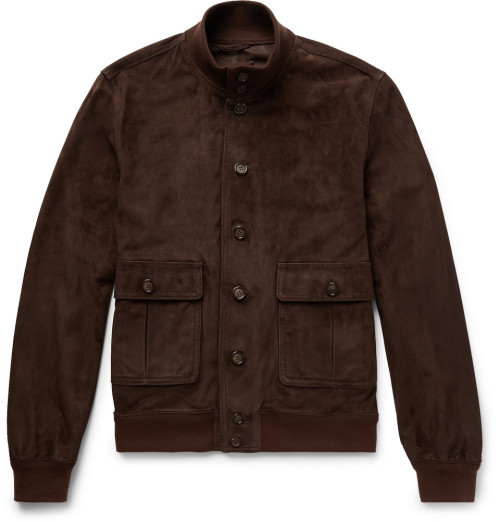
Men who have a classic sense of style sometimes struggle with weekend clothes. Classic casualwear is often a bit too boring – sometimes even business casual – while more directional lines can be too avant-garde for certain lifestyles. For guys who find themselves in this conundrum, Valstar’s citified A-1 bomber jacket (what they call their Valstarino) is the perfect solution. It goes well with classic jeans or tailored trousers, smooth merino knits and button-ups, plain white sneakers or pebble grained chukkas. Simon at Permanent Style has a nice post showing three ways this can be worn. The jacket is classic without being vanilla; interesting without being weird. The stand up collar is a nice way to frame your face, and the jacket serves as a good substitute for tailored sport coats.
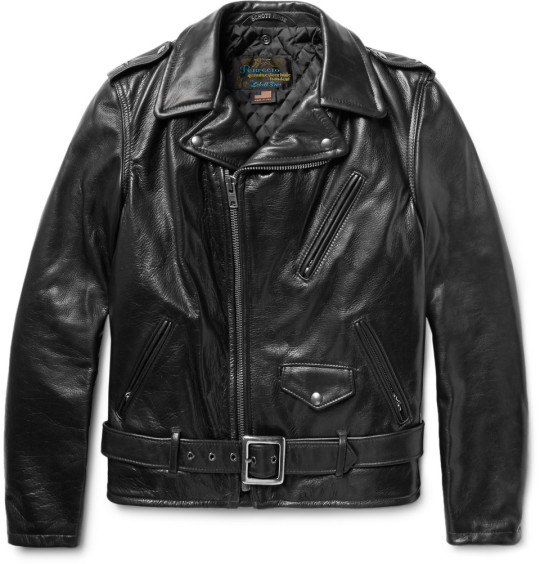
On the other side of the leather spectrum is Schott’s Perfecto, the original double rider. Schott has a few versions of their iconic leather jacket. I believe this one is their 519 fit, which is a slightly slimmer jacket than the ones made for actual motorcycle riding, while still being cropped enough to give the slightly rounded silhouette. 3sixteen’s recent roughout suede double rider was based off this fit. The one at Mr. Porter is made from a black cowhide, which will be tougher and more rugged than most fashion-orientated double riders. Pair it with jeans or fatigues for a workwear look. Mr. Porter also has a Schott cafe racer, if you want something more toned down.
